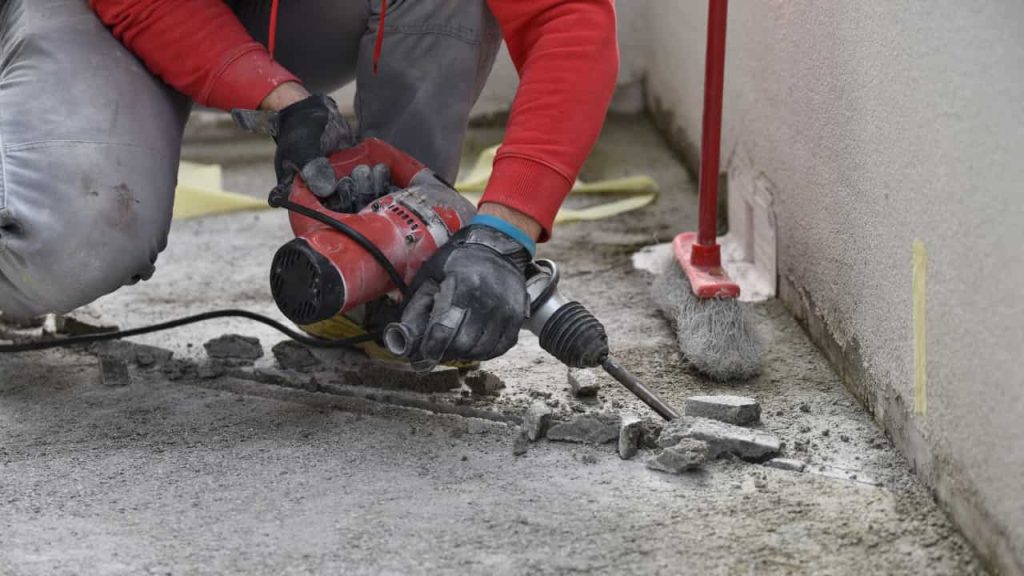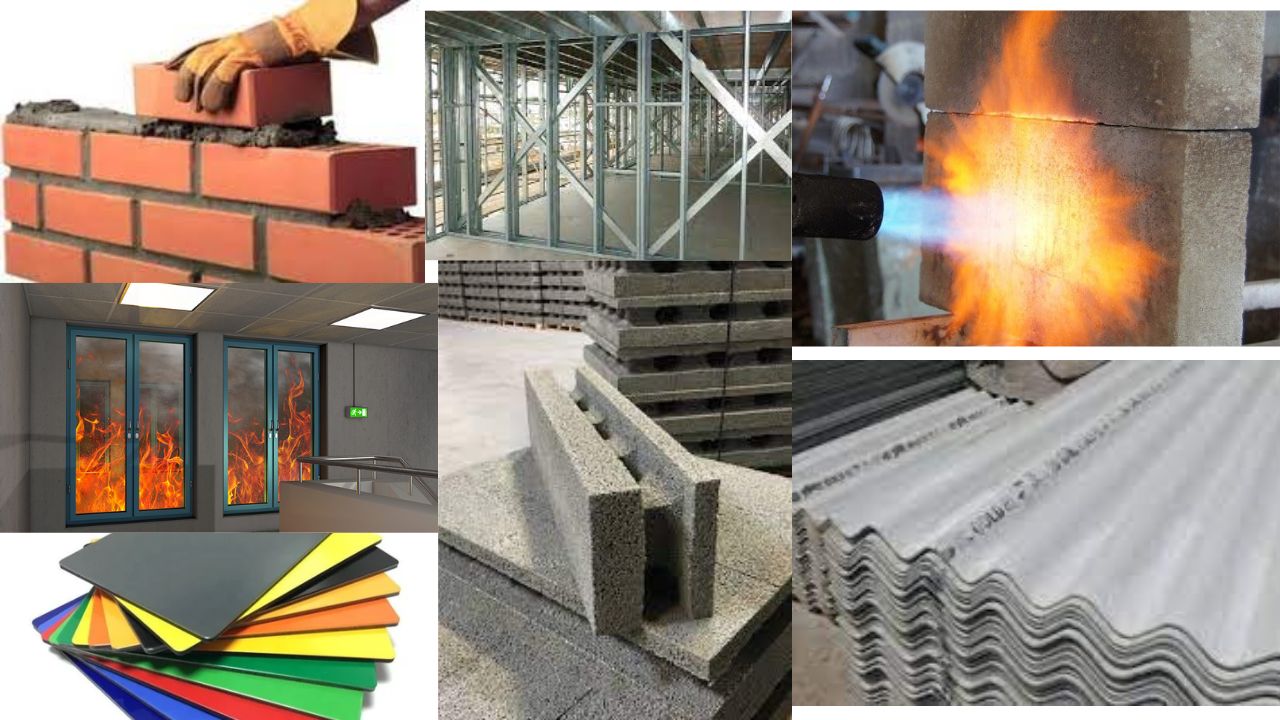Demolition is a precise and demanding task that requires specialized tools to ensure safety, efficiency, and accuracy.
Whether you’re dealing with a small-scale renovation or a large-scale demolition project, having the right tools at your disposal is crucial.
From tearing down structures to clearing debris, these expert tools are indispensable for anyone involved in demolition work.
Each serves a unique purpose, contributing to the overall success and safety of the demolition process.
In this article, we have provided a detailed list of Expert Tools You Need for Demolition. Carefully check them out.
Table of contents
What is Demolition in Construction
Demolition refers to the deliberate and controlled dismantling or destruction of structures, buildings, or other artificial constructions. It is an integral part of the construction industry, often serving as a precursor to new developments or renovations. Demolition can range in scale from removing a small interior wall to demolishing entire buildings or industrial complexes.
The process of demolition involves careful planning, execution, and consideration of various factors such as safety, environmental impact, and resource management. It requires specialized skills, knowledge, and equipment to ensure the safe and efficient completion of the project.
What are the Importance of Expert Tools in Demolition?
Expert tools play a crucial role in demolition projects, ensuring safety, efficiency, and precision. The right tools enable workers to execute tasks with greater control, minimize risks, and complete projects within the specified timeframe.
Read ALSO: 10 Best Tools for Electronics| Best Tools
Different Types of Demolition Tools
Demolition tools are specifically designed to break down and remove structures, buildings, and other artificial constructions. They play a crucial role in demolition projects, ensuring efficiency, precision, and safety.
Demolition tools can be broadly categorized into three main types based on their operating mechanism:
Mechanical Tools:
Mechanical tools rely on physical force or impact to break down materials. They are commonly used in demolition projects due to their versatility and effectiveness.
Here is a detailed overview of four essential mechanical demolition tools: wrecking balls, excavators, bulldozers, and jackhammers:
1. Wrecking Balls

The wrecking ball, a heavy steel ball suspended from a crane, is one of the most iconic symbols of demolition.
Its immense weight and momentum allow it to break down large structures, walls, and foundations with brute force.
Wrecking balls are primarily used for the demolition of large buildings, industrial complexes, and bridges.
Advantages of Wrecking Balls:
- Powerful and effective for demolishing large structures
- Versatility in handling various materials
- Minimal tool maintenance required
Disadvantages of Wrecking Balls:
- Limited precision and control
- Potential for accidents and injuries
- High vibration and noise levels
Read ALSO: 10 Best Tools For Cutting Drywall | Best Tools
2. Excavators

Excavators are versatile and powerful machines that play a crucial role in various construction activities, including demolition. Equipped with a long arm and a bucket, excavators can perform a wide range of demolition tasks, such as:
- Breaking down structures and walls
- Loading debris onto trucks
- Excavating foundations
- Grading and leveling sites
Advantages of Excavators:
- Versatility for various demolition tasks
- Powerful and efficient in breaking down materials
- Adjustable attachments for specific applications
- Relatively precise movements and control
Disadvantages of Excavators:
- Large size and weight can limit manoeuvrability
- Requires experienced operators
- Potential for hydraulic leaks and malfunctions
3. Bulldozers

Bulldozers are heavy-duty earthmoving machines equipped with large blades that push, scrape, and level materials. They are commonly used in demolition projects for:
- Clearing debris and levelling sites
- Demolishing smaller structures and walls
- Grading and backfilling
- Moving and transporting materials
Advantages of Bulldozers:
- Powerful and efficient for moving large amounts of debris
- Versatility in various earthmoving tasks
- Relatively simple operation
Disadvantages of Bulldozers:
- Limited precision and control
- Large size and weight can restrict manoeuvrability
- Potential for accidents and injuries if not operated safely
4. Jackhammers

Jackhammers are handheld pneumatic tools that use compressed air to deliver rapid blows, making them effective for breaking down hard materials such as concrete, masonry, and rock. These are among the hand tools for demolition. They are commonly used for:
- Demolishing small sections of walls and foundations
- Breaking up concrete slabs and pavements
- Excavating in hard and difficult-to-reach areas
Advantages of Jackhammers:
- Portable and easy to manoeuvre
- Effective for breaking down hard materials
- Relatively inexpensive compared to larger demolition equipment
Disadvantages of Jackhammers:
- Limited reach and area coverage
- High noise and vibration levels
- Requires physical exertion and can cause fatigue.
Read Also: 10 Best Tools For Mechanics | Best Tools
Explosive Tools:
Explosive tools utilize controlled explosions to demolish large structures or break down heavily reinforced concrete. They require specialized expertise and safety precautions due to their high-risk nature.
Examples of explosive tools include:
- Shaped charges
- Dynamite
- Blastcrete
A. Controlled Demolition Charges
Controlled demolition charges are the primary tools used in explosive demolition. These charges are carefully designed and placed to ensure the precise fracturing and collapse of the structure. Types of controlled demolition charges include:
- Shaped Charges: Shaped charges utilize a precisely focused explosive force to cut through thick concrete walls and structural supports.
- Dynamite: Dynamite is a high-explosive material that can be shaped and packed into strategically drilled holes to break down large sections of concrete and masonry.
- Blastcrete: Blastcrete is a specialized explosive material mixed with concrete, creating a controlled expansion force for breaking down concrete structures.
Hydraulic Demolition Tools
Hydraulic demolition tools are powered by pressurized hydraulic fluid, providing powerful and precise movements for breaking down hard materials. They are commonly used in demolition projects for a variety of tasks, including:
- Demolishing concrete structures, walls, and foundations
- Breaking up asphalt and pavement
- Cutting through thick metal sheets and pipes
5. Hydraulic Crushers
Hydraulic crushers are heavy-duty attachments for excavators or skid-steer loaders that utilize powerful jaws to crush and break down hard materials such as concrete, rock, and demolition debris. They are ideal for:
- Crushing concrete rubble into smaller pieces for recycling or reuse
- Breaking down large pieces of demolition debris for easier handling and transport
- Reducing the volume of demolition waste for disposal
Advantages of Hydraulic Crushers:
- High crushing force and efficiency
- Versatility in handling various hard materials
- Durable construction and minimal maintenance requirements
Disadvantages of Hydraulic Crushers:
- Limited reach and maneuverability
- Requires a compatible excavator or skid-steer loader
- Potential for noise and vibration
6. Hydraulic Breakers
Hydraulic breakers, also known as hydraulic hammers, are handheld tools that deliver rapid and powerful blows using pressurized hydraulic fluid. They are effective for breaking down concrete, masonry, and rock in localized areas.
Advantages of Hydraulic Breakers:
- Portability and manoeuvrability
- Powerful impact force for breaking down hard materials
- Versatility in various demolition applications
Disadvantages of Hydraulic Breakers:
- Limited reach and area coverage
- Require physical exertion and can cause fatigue
- High noise and vibration levels
7. Hydraulic Shears
Hydraulic shears are attachments for excavators or skid-steer loaders that use powerful jaws to cut through thick metal sheets, pipes, and cables. They are commonly used for:
- Demolishing steel structures, beams, and pipes
- Cutting through reinforced concrete with embedded steel rebar
- Salvaging scrap metal from demolition sites
Advantages of Hydraulic Shears:
- Powerful cutting force and precision
- Versatility in handling various metals
- Durable construction and minimal maintenance requirements
Disadvantages of Hydraulic Shears:
- Limited reach and manoeuvrability
- Requires a compatible excavator or skid-steer loader
- Potential for noise and vibration
Sure, here is a detailed overview of three specialized tools commonly used in demolition projects: concrete crushers, pneumatic tools, and diamond wire cutting:
Specialized Tools for Demolition
Demolition often requires specialized tools that go beyond the standard mechanical, explosive, and hydraulic options. These specialized tools address specific demolition challenges and provide precision and efficiency for unique tasks.
8. Concrete Crushers
Concrete crushers, also known as jaw crushers, are heavy-duty machines designed to break down concrete into smaller pieces. They are commonly used in demolition projects for:
- Reducing the volume of concrete debris for easier handling and transportation
- Producing recycled concrete aggregates for various construction applications
- Preparing concrete rubble for disposal in landfills or recycling facilities
Types of Concrete Crushers:
- Portable Jaw Crushers: These compact and portable crushers are ideal for onsite crushing of concrete debris.
- Stationary Jaw Crushers: These larger and more powerful crushers are suitable for high-volume concrete crushing operations.
- Impact Crushers: Impact crushers utilize high-impact forces to break down concrete into smaller pieces.
- Cone Crushers: Cone crushers provide precise and efficient crushing of concrete aggregates.
Pneumatic Tools
Pneumatic tools are powered by compressed air, offering portability and versatility for various demolition tasks. Common pneumatic tools used in demolition include:
- Pneumatic Hammers: Pneumatic hammers deliver rapid and powerful blows for breaking down concrete, masonry, and rock.
- Pneumatic Chisels: Pneumatic chisels provide precision and control for chipping away concrete, tiles, and other materials.
- Pneumatic Rivet Busters: Pneumatic rivet busters are designed for removing rivets and fasteners from steel structures.
- Pneumatic Needle Scalers: Pneumatic needle scalers remove rust, paint, and other surface materials from concrete and steel structures.
Advantages of Pneumatic Tools:
- Portability and manoeuvrability
- Powerful impact force for demolition tasks
- Versatility in various applications
Disadvantages of Pneumatic Tools:
- Require a compressed air source
- High noise and vibration levels
- Regular maintenance is essential
9. Diamond Wire Cutting
Diamond wire cutting is a specialized technique that utilizes diamond-impregnated wire to cut through hard materials, including concrete, reinforced concrete, and steel. It is particularly useful for:
- Demolishing thick concrete walls and foundations
- Cutting through reinforced concrete beams and columns
- Salvaging valuable materials from demolition sites with minimal waste
Benefits of Diamond Wire Cutting:
- Precision and controlled cutting
- Ability to cut through thick and reinforced materials
- Minimal noise and vibration compared to other demolition methods
- Environmentally friendly as it produces less dust and debris
Applications of Diamond Wire Cutting:
- Demolition of bridges, buildings, and industrial structures
- Cutting of large concrete pipes and culverts
- Salvaging steel beams and other valuable materials
- Precise cutting of openings for doorways, windows, and utility lines.
Read ALSO: 10 Best Tools for Small Businesses | Best Tools
List of Hand Tools for Demolition:
Hand tools for demolition play a crucial role in demolition projects, providing precision and control for tasks that require more finesse than heavy machinery. Here are some essential hand tools for demolition:
- Pry Bars and Crowbars
- Sledgehammers
- Nail Pullers
- Pliers and Wire Cutters
- Reciprocating Saws
- Handheld Power Drills
- Chisels and Hammers
- Safety Glasses and Gloves
Floor Demolition Tools
Demolishing a floor can be a challenging task, but with the right tools, it can be done safely and efficiently. Here are some of the essential tools you’ll need for floor demolition:
- Floor scrapers: Floor scrapers are handheld tools with a wide, flat blade that is used to scrape up flooring materials such as linoleum, vinyl, and carpet. They are available in a variety of sizes and styles and can be used with either a manual or electric power source.
- Pry bars: Pry bars are versatile tools that can be used for a variety of demolition tasks, including removing floorboards, prying up tiles, and loosening stubborn fasteners. They are available in a variety of lengths and styles and can be used with either a manual or electric power source.
- Jackhammers: Jackhammers are powerful pneumatic tools that are used to break up concrete and other hard materials. They are commonly used for demolishing concrete floors, foundations, and walls.
- Demolition hammers: Demolition hammers are similar to jackhammers, but they are smaller and lighter. They are commonly used for demolishing smaller areas of concrete, such as floor tiles and countertops.
- Circular saws: Circular saws are handheld power saws that can be used to cut through a variety of materials, including wood, metal, and plastic. They are commonly used for cutting through floor boards, subflooring, and joists.
- Reciprocating saws: Reciprocating saws, also known as Sawzalls, are powerful handheld saws that can cut through a variety of materials, including wood, metal, and plastic. They are commonly used for cutting through pipes, beams, and other structural elements.
Factors Influencing Tool Selection for Demolition Projects
Choosing the right demolition tools is crucial for ensuring safety, efficiency, and precision in demolition projects. Several factors need to be considered when selecting tools for a specific demolition task:
Building Structure and Materials
The type of structure and materials being demolished significantly impacts the selection of tools. For instance, demolishing a brick wall requires different tools than demolishing a reinforced concrete structure. Key factors to consider include:
- Structure Type: The size, complexity, and layout of the structure influence the choice of tools. For example, smaller structures may require handheld tools, while larger projects may necessitate heavy-duty equipment.
- Materials: The materials used in the structure’s construction play a crucial role in tool selection. Harder materials like concrete and steel require more powerful tools, while softer materials like wood or drywall may be handled with less robust equipment.
- Reinforcement: The presence of reinforcement, such as steel rebar in concrete, requires specialized tools like diamond wire saws or hydraulic breakers to cut through the reinforced sections effectively.
Read Also: 10 Best Tools for Quilting| Best Tools
Environmental Considerations
Demolition projects often take place in urban or populated areas, and the selection of tools must consider the environmental impact. Factors to consider include:
- Noise Levels: Demolition sites can generate significant noise pollution, and tool selection should prioritize quieter options whenever possible. For instance, hydraulic shears or diamond wire saws offer quieter alternatives to impact hammers or wrecking balls.
- Dust and Debris Generation: Dust and debris from demolition can affect air quality and pose respiratory hazards. Selecting tools that minimize dust generation, such as wet demolition techniques or enclosed attachments, is crucial for environmental protection and worker safety.
- Vibration: Excessive vibration from demolition activities can disturb nearby structures and infrastructure. Tools that minimize vibration, such as hydraulic breakers with vibration isolation systems, should be considered.
Project Scope and Size
The scope and size of the demolition project also influence tool selection. For smaller demolition projects, handheld tools or smaller equipment may be sufficient. However, larger-scale demolition projects require more powerful and heavy-duty tools to handle the volume of work and the complexity of the structure.
Considerations for project scope include:
- Demolition Volume: The amount of material to be demolished determines the capacity and power required of the tools.
- Time Constraints: The project timeline influences the choice of tools, as some methods may be faster but require specialized equipment.
- Labour Availability: The availability of skilled labour may affect tool selection, as some tools require specialized training or expertise to operate safely and effectively.
By carefully considering these factors, demolition contractors can make informed decisions about tool selection, ensuring the safety, efficiency, and environmental impact of their demolition projects.
Safety Measures in Tool Selection
Choosing the right demolition tools is crucial for ensuring safety and preventing accidents. Several factors should be considered when selecting tools for demolition projects:
- Project Requirements: Assess the specific requirements of the demolition project, considering the size, structure, and materials involved.
- Tool Suitability: Select tools that are suitable for the intended tasks and compatible with the materials being demolished.
- Worker Expertise: Ensure that workers are properly trained and have the necessary expertise to operate the chosen tools safely.
- Environmental Conditions: Consider environmental factors such as noise, dust, and vibration when selecting tools.
- Safety Precautions: Implement appropriate safety precautions, including personal protective equipment (PPE), barricades, and proper signage.
- Regular Maintenance: Maintain tools regularly to ensure they are in good working condition and free from defects.
- Inspections: Conduct regular inspections of tools and equipment before, during, and after demolition work.
Read Also: 10 Best Tools For The Kitchen | Best Tools
FAQs
Safety is paramount in demolition projects, as heavy machinery and powerful tools are often employed. Essential safety measures include:
Personal Protective Equipment (PPE): Wear appropriate PPE, including hard hats, safety glasses, gloves, steel-toed boots, and hearing protection, to safeguard against falling debris, flying particles, and excessive noise.
Tool Training and Experience: Ensure that workers are properly trained and experienced in operating the specific demolition tools being used.
Site Security and Barricades: Establish clear site boundaries, restrict unauthorized access, and erect barricades to protect personnel and the public from potential hazards.
Inspections and Maintenance: Conduct regular inspections and maintenance of demolition tools to ensure they are in good working condition and free from defects.
Emergency Procedures: Implement clear emergency procedures in case of accidents or unexpected events.
Selecting the right demolition tool depends on various factors, including:
Building Structure and Materials: Consider the type of structure, materials used, and presence of reinforcement to determine the appropriate tools.
Project Scope and Size: Assess the project’s scale, demolition volume, and time constraints to choose tools that match the project’s requirements.
Environmental Considerations: Prioritize tools that minimize noise, dust generation, and vibration to reduce environmental impact.
Tool Availability and Expertise: Consider the availability of the required tools and the expertise of workers to operate them safely and effectively.
Conclusion
Demolition is a challenging yet rewarding task that requires the right tools and expertise to execute safely and effectively. The essential tools discussed in this article – hydraulic hammers, concrete crushers, wrecking balls, excavators, and bulldozers – provide the foundation for tackling a wide range of demolition projects.
Whether you’re dealing with a small interior wall or a large industrial structure, these tools offer the power, precision, and versatility needed to break down structures and manage demolition debris efficiently.
Remember, safety is paramount in demolition work. Always follow proper safety protocols, wear appropriate PPE, and ensure that workers are properly trained and experienced in operating the tools.
References
Recommendations
- 10 Best Tools for Small Businesses | Best Tools
- 10 Best Tools for Electronics | Best Tools
- 10 Best Tools for Task Management | Best Tools
- 10 Best Tools For Mechanics | Best Tools
- 10 Best Tools For Cutting Drywall | Best Tools
- 10 Best Tools For The Kitchen | Best Tools
- 10 Best Tools for Quilting| Best Tools
- 10 Best Tools for Trading| Best Tools





